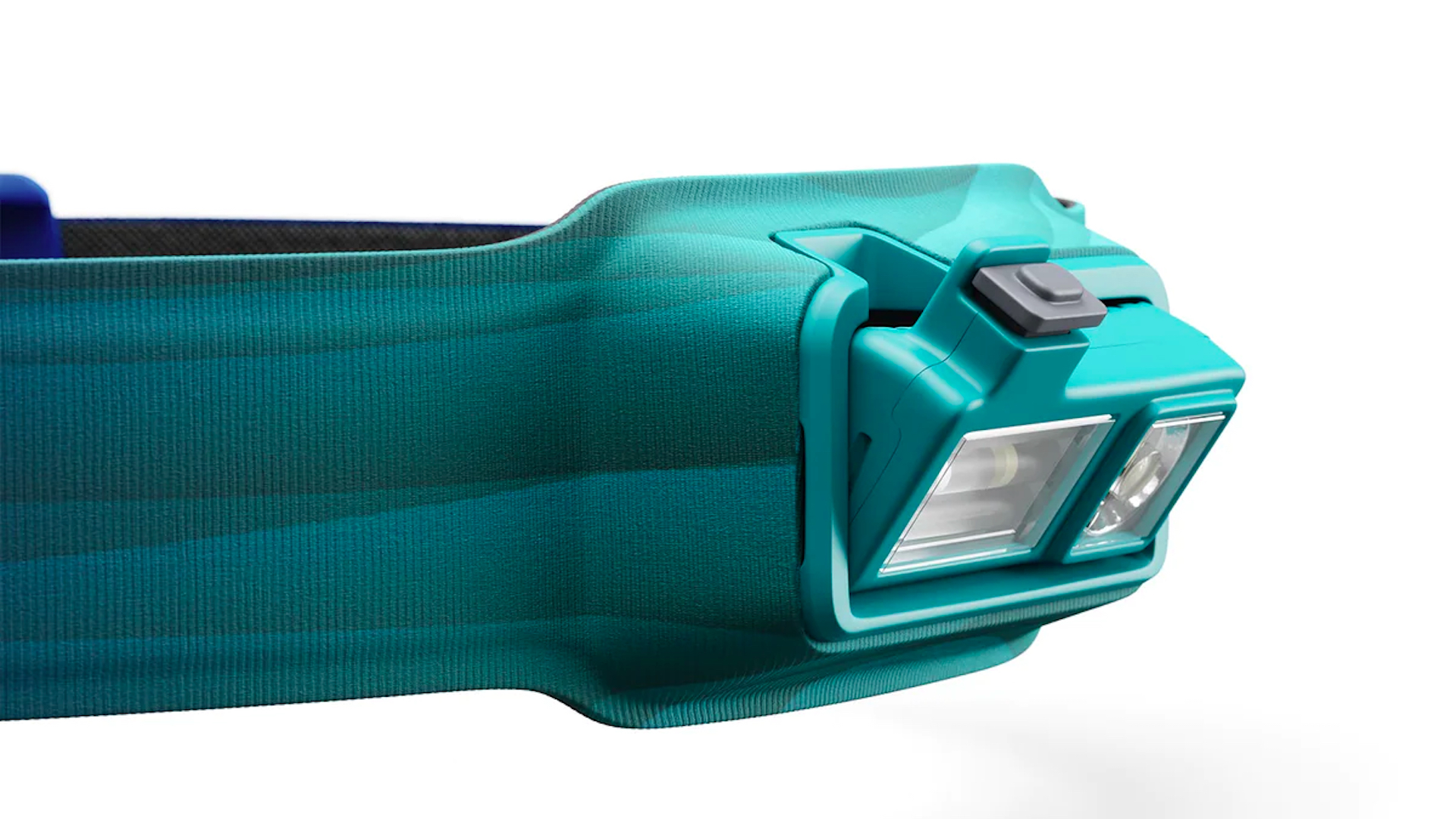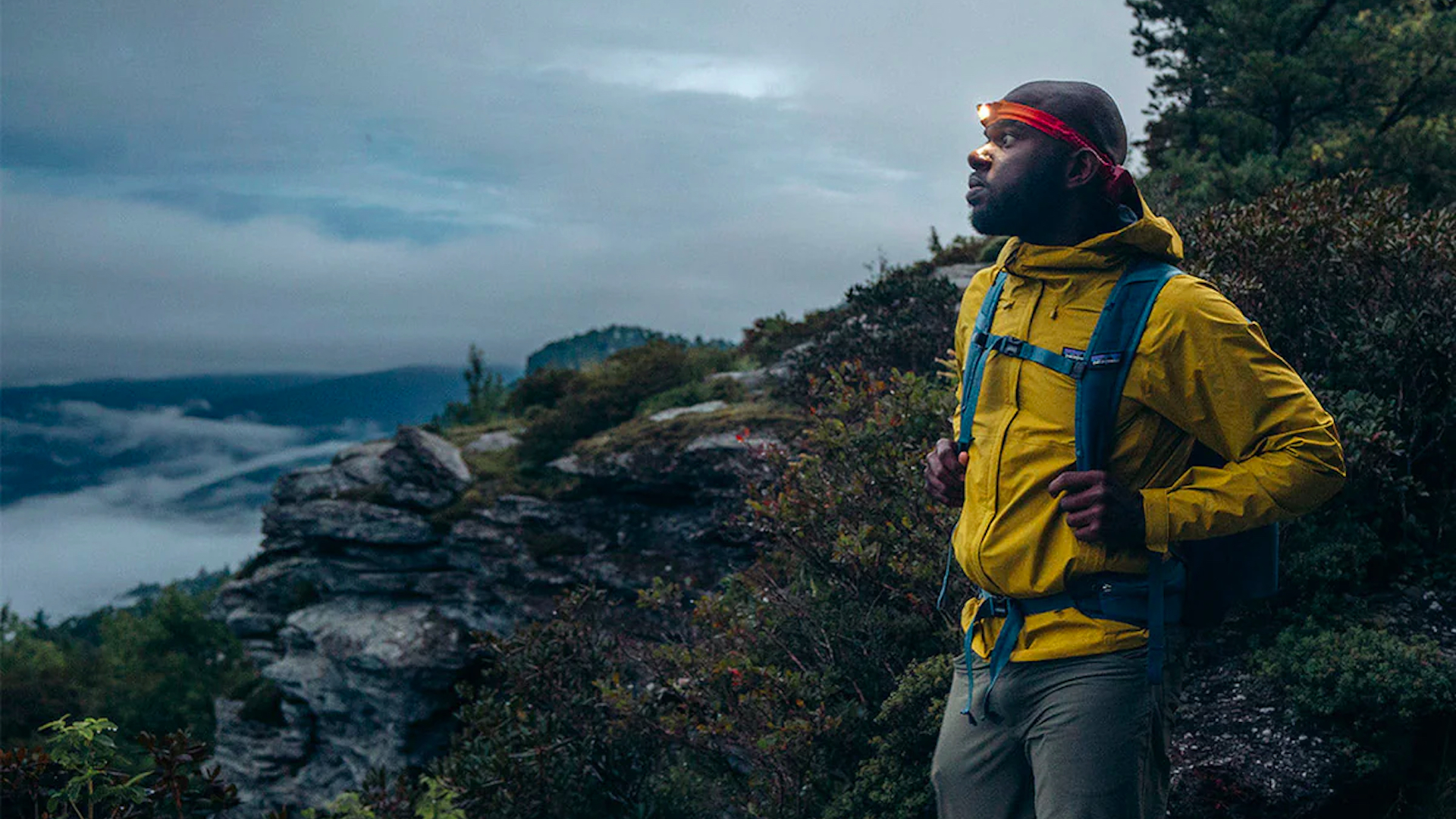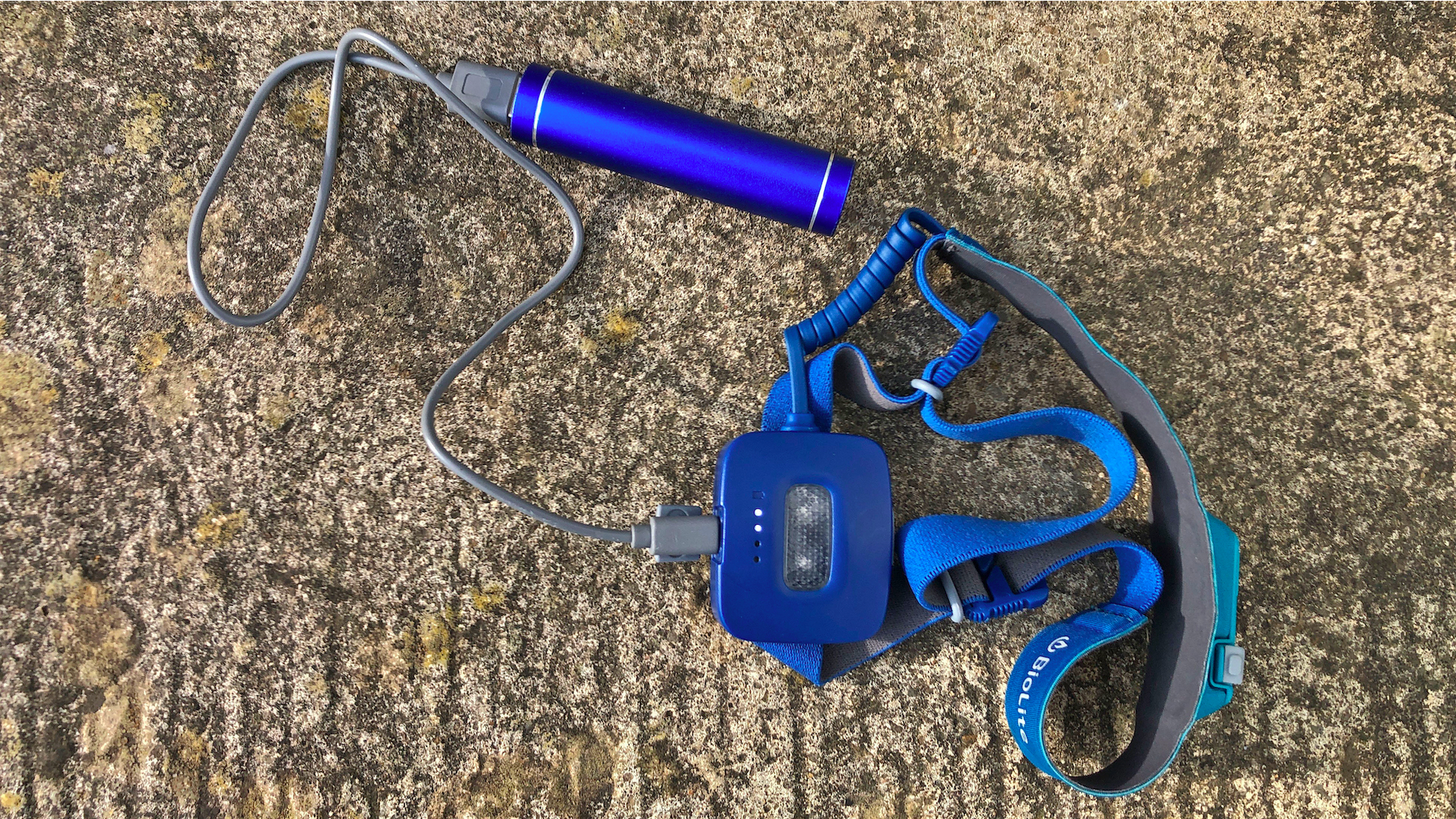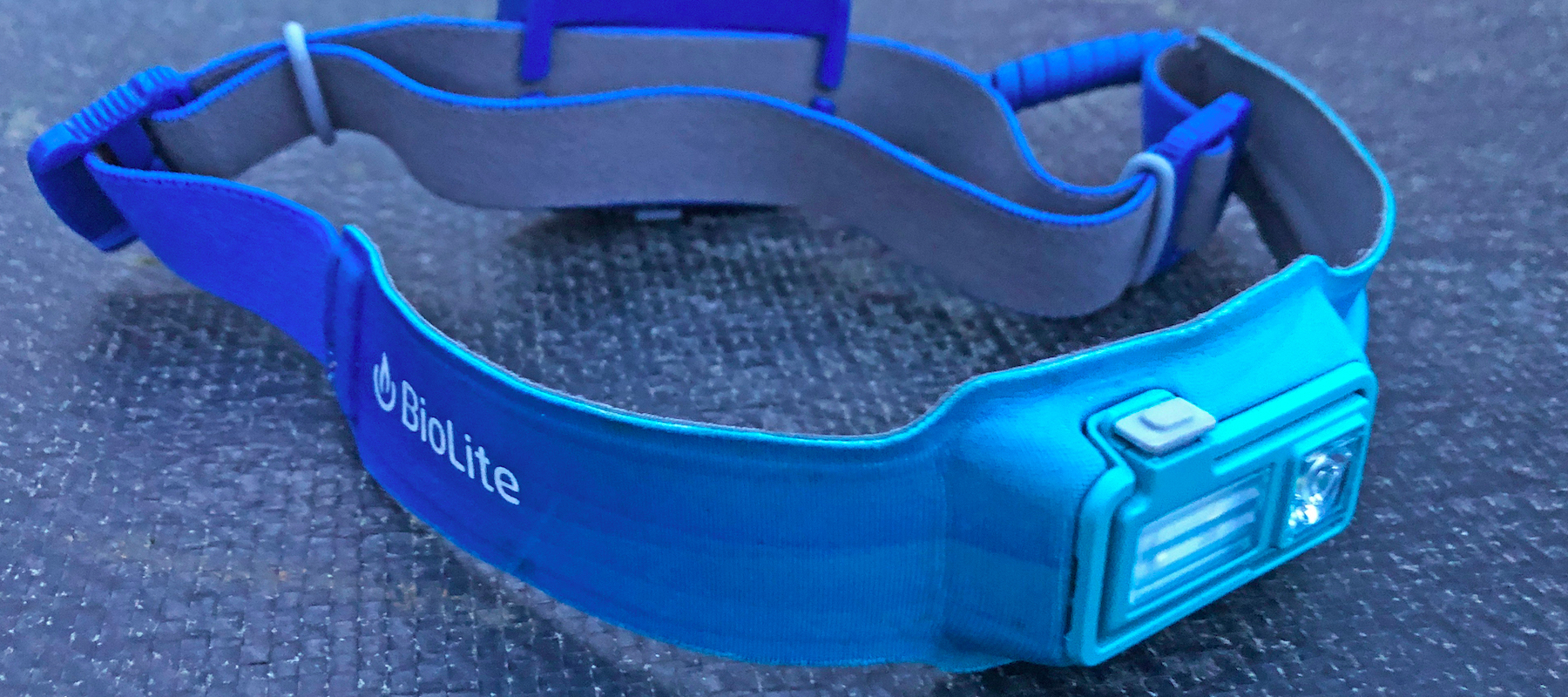Advnture Verdict
The rechargeable, lightweight, cleverly balanced and function-rich BioLite HeadLamp 425 is a versatile tool for illuminating dark nights, whether you’re camping or out adventuring.
Pros
- +
Very lightweight
- +
Slim profile
- +
Rear safety light
- +
Good range of modes
- +
Light can be angled
- +
Rechargeable
Cons
- -
Not waterproof
- -
No option to carry extra batteries
- -
Headband isn’t breathable
You can trust Advnture
BioLite HeadLamp 425: first impressions
Available in several lively color options, the rechargeable BioLite HeadLamp 425 is attractively priced and designed to be very lightweight and comfortable to wear for long periods of time, during a wide range of activities. From night running and hiking to camping and general use, the BioLite HeadLamp 425 proves to be one of the best headlamps available.
• List price: $59.95 (US) / £59.95 (UK)
• Weight: 78g / 2.75oz
• Max lumens: 425
• Max beam length: 85m / 280ft
• Burn time: 60 hours on low / 4 hours on high
• Light modes: Front: White spot / White flood / White spot & flood / White strobe / Red flood Rear: Red strobe / Red flood
• Water resistance: IPX4 (splashproof)
• Batteries: Integrated rechargeable 1000 mAh lithium ion
• Compatibility: Suitable for hiking, running, backpacking, camping and general use
The super-slim front light attaches to a rechargeable battery unit on the back of the product via cabling that’s mostly integrated into the elasticated material of the headband.
The BioLite 425 has a really rich range of functions, with flood, spot and strobe options at different levels of white brightness, up to a more-than-adequate 425 lumens. There’s also a red front flood mode that will allow you to find your feet in a pitch-black tent without waking everyone else up, or to check a map or telescope setting without blowing your night vision.
The back-mounted battery unit has a red safety light to make you visible from behind during night hikes or runs along lanes and roads shared with traffic, which can be set to strobe (better and more energy efficient) or flood.

The whole light unit can be locked to prevent it being accidentally turned on during transit, and there’s a low-power warning system.
The battery is recharged via a small USB–C cord, which can be plugged into any USB outlet. The burn time is impressive – up to 60 hours on low mode – but there is no capacity for using standard batteries. So if you’re on a multi-day backpacking adventure, you’ll need to take a powerbank to recharge it.
It is splashproof, but can’t be submerged in water, and you need to be careful to ensure the rubber plug is properly inserted in the recharging port on the battery unit.
BioLite HeadLamp 425: on test after dark

The first extended adventure I took the BioLite 425 on was a four-day fastpacking escapade along the West Highland Way in Scotland. I was taking this on in late October, when the evenings were rapidly shrinking, and nightfall caught up with me every day while I was still out on the trail, long before I’d reached a suitable overnight stopping place. So having a really reliable head torch was crucial to finding my way and setting up camp.
For two and a half of the four days I was on the trail, this was the perfect headlamp for the job. The low-profile, nicely balanced design of the BioLite 425, coupled with the comfortable and easy-to-adjust harness, meant that it didn’t bounce at all, even when I was running and jumping along the sometimes technical trail. The simple-to-use light can be angled up and down within its casing, which makes it ideal for night running and hiking, when you need to direct the beam closer to the ground, and I was able to use the red light to check my map without completely ruining my night vision.

Scotland in late October is a wet place to be, and the torrential rain I faced on the West Highland Way certainly tested the BioLite 425’s splashproof credentials. The unit passed the test; I didn’t experience any problems with it. At night, I was able to read with the torch on its low setting, to save juice.
On the evening of the third day, the BioLite 425 started warning me it was low on power, and then it died. Fortunately, I had a backup headlamp, but herein lies the major problem with this unit – it doesn’t take standard batteries, so you can’t carry spares. Arguably, of course, spare batteries would have weighed almost as much as my spare unit, but it would have been nice to know I could have bought spares at a shop and used them if need be. The other way around this issue is to carry a lightweight power unit and the small recharging cable.
In general, though, I’ve been using the BioLite 425 headlamp for evening trail runs, weekend camping trips and night-time dog walks – the sort of scenarios that it absolutely excels in. For its low price and light weight, it’s an excellent head torch.

Author of Caving, Canyoning, Coasteering…, a recently released book about all kinds of outdoor adventures around Britain, Pat has spent 20 years pursuing stories involving boots, bikes, boats, beers and bruises. En route he’s canoed Canada’s Yukon River, climbed Mont Blanc and Kilimanjaro, skied and mountain biked through the Norwegian Alps, run an ultra across the roof of Mauritius, and set short-lived records for trail-running Australia’s highest peaks and New Zealand’s Great Walks. He’s authored walking guides to Devon and Dorset, and once wrote a whole book about Toilets for Lonely Planet. Follow Pat’s escapades on Strava here and Instagram here.

